Star-chitecture
A brief history of star-gazing structures
Mendelsohn’s Einstein Tower built in 1921 is often hailed as an icon of Modern Architecture. But did you know that the astronomical observatory houses Europe’s first solar telescope, built to prove Einstein’s theory of relativity? The link between architecture and the stars is manifest in a myriad of structures, but form never followed function more closely than in the realm of astronomy. Here’s a look at four world-famous buildings and one soon-to-be-famous structure in orbit.
From the beginning, humankind has molded its understanding of intangible concepts like heaven, eternity, infinity and the ‘beyond’ into tangible objects. Stonehenge, the Mayan pyramids and medieval churches all aim to express the unbreakable bond between the earth and the heavens.
When Galileo optimized the refractor telescope in 1609 by introducing multiple lenses, the first thing he did was point it towards the sky. This instrument, which allowed us to look literally into space, has determined the physical appearance of observatories through the centuries. Today, they do not even have to be on Earth.
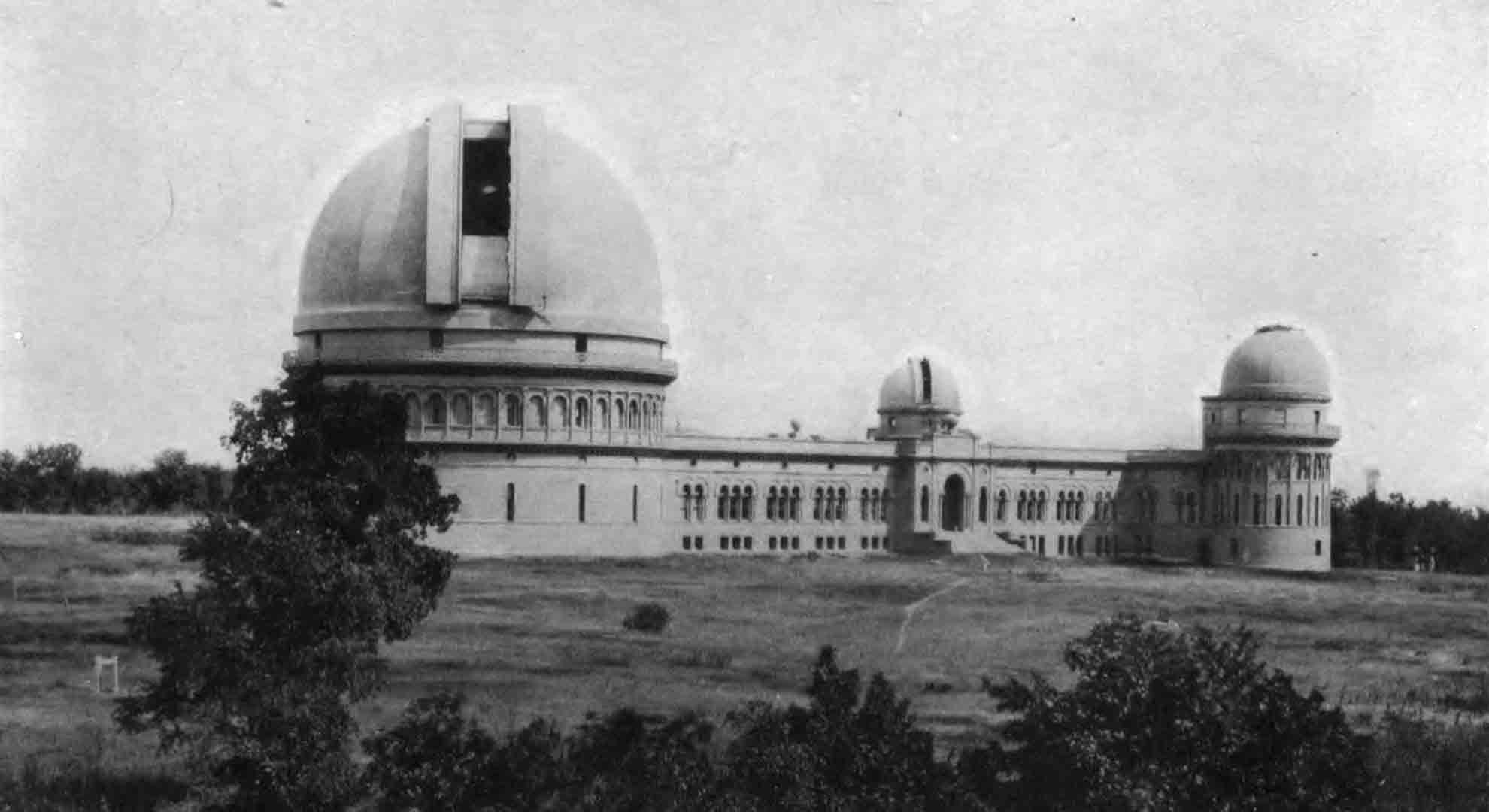
Yerkes Observatory
The world’s largest refractor telescope is located at Yerkes astronomical observatory, in Williams Bay, Wisconsin, built in 1897. Housed inside a 60 ft long tube on top of a 43 ft high mount and with a 40-inch diameter lens, the Yerkes refractor is still the largest of its kind. Being the world’s first astrophysical observatory built for scientific research, Yerkes astronomical Observatory is considered the birthplace of modern astrophysics. It represented an important shift in observatory design, not only housing a telescope, but also succeeding in making significant scientific discoveries including the detection of carbon dioxide in the Martian atmosphere, Uranus’ fifth moon and Neptune’s second moon, to name a few. In the early 18th century, the work of Isaac Newton and William Herschel led to the invention of the reflector telescope, in which the use of mirrors made it possible to magnify objects millions of times.
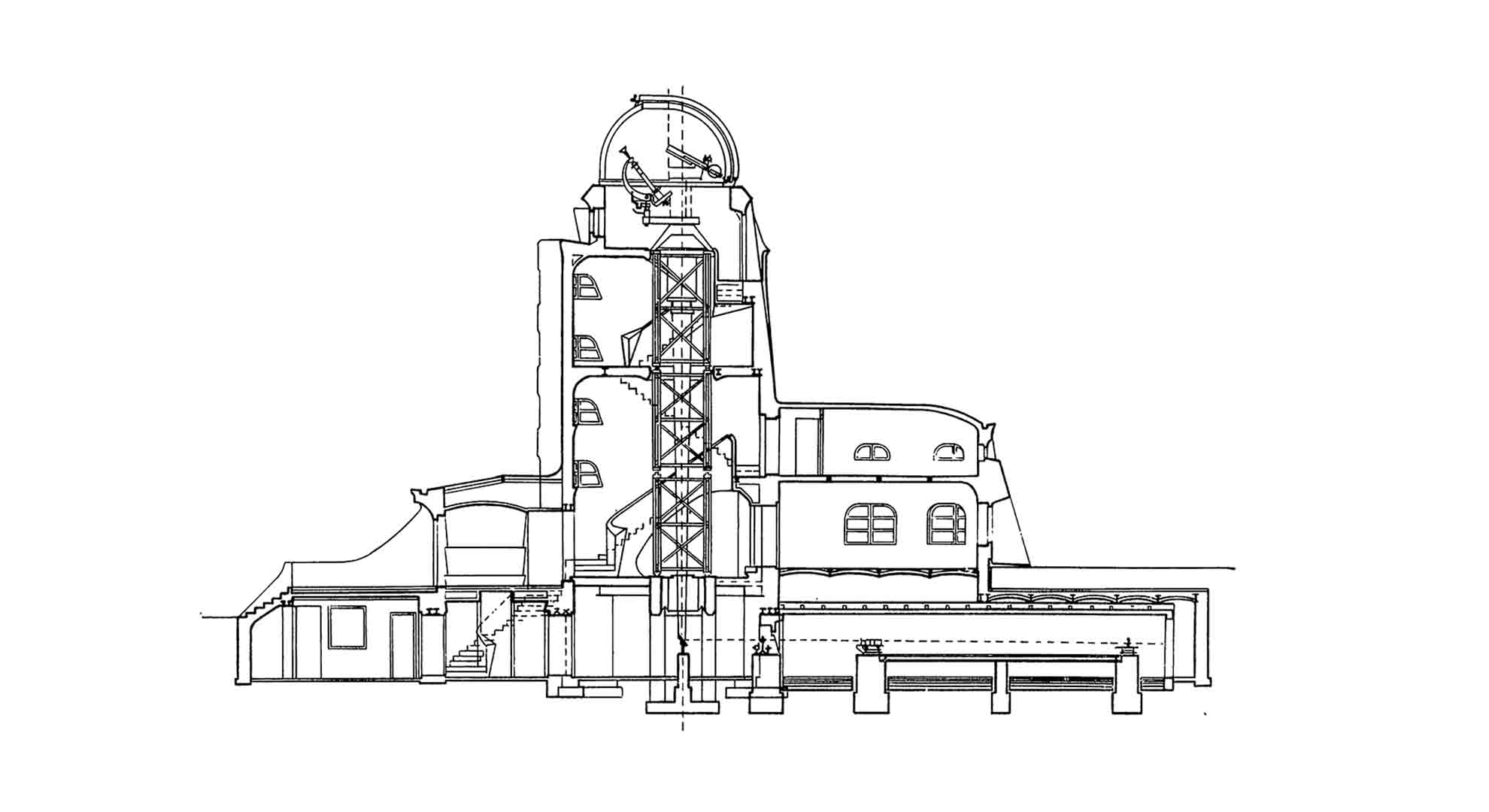
SECTION OF THE EINSTEIN TOWER LOCATED IN THE ALBERT EINSTEIN SCIENCE PARK IN POTSDAM, GERMANY. IT WAS BUILT BY ARCHITECT ERICH MENDELSOHN ON THE SUMMIT OF THE POTSDAM TELEGRAPHENBERG TO HOUSE A SOLAR TELESCOPE DESIGNED BY THE ASTRONOMER ERWIN FINLAY-FREUNDLICH
Einstein Tower
Since then, astronomical observatories have been built in wood, steel and concrete, but almost all of them are dome-shaped to facilitate the operation of the telescope inside. An example of this is Erich Mendelsohn’s Einstein Tower, which also illustrates how important these buildings have become for astronomical research. Built in 1921 near Berlin, Germany, this icon of expressionism is hailed for its artistic and architectural qualities, but its scientific value is equally astronomical: the tower was built by the director of the Einstein Foundation, Erwin Finlay-Freundlich, with the aim to prove Einstein’s theory of relativity.
Conceived by Mendelsohn primarily as an experimental lab for Freundlich’s research, the structure of this astronomical observatory is a stucco-covered brick tower built around a vertical telescope. On a separate foundation, a horizontal spectrograph was situated inside an insulated room partially below ground to provide a stable thermal environment for precision spectroscopy needed to measure the relativistic redshift of solar spectral lines in the gravity field of the Sun. Although Finlay-Freundlich didn’t succeed in his time, the laboratory developed into one of Europe’s leading research centers on solar physics.
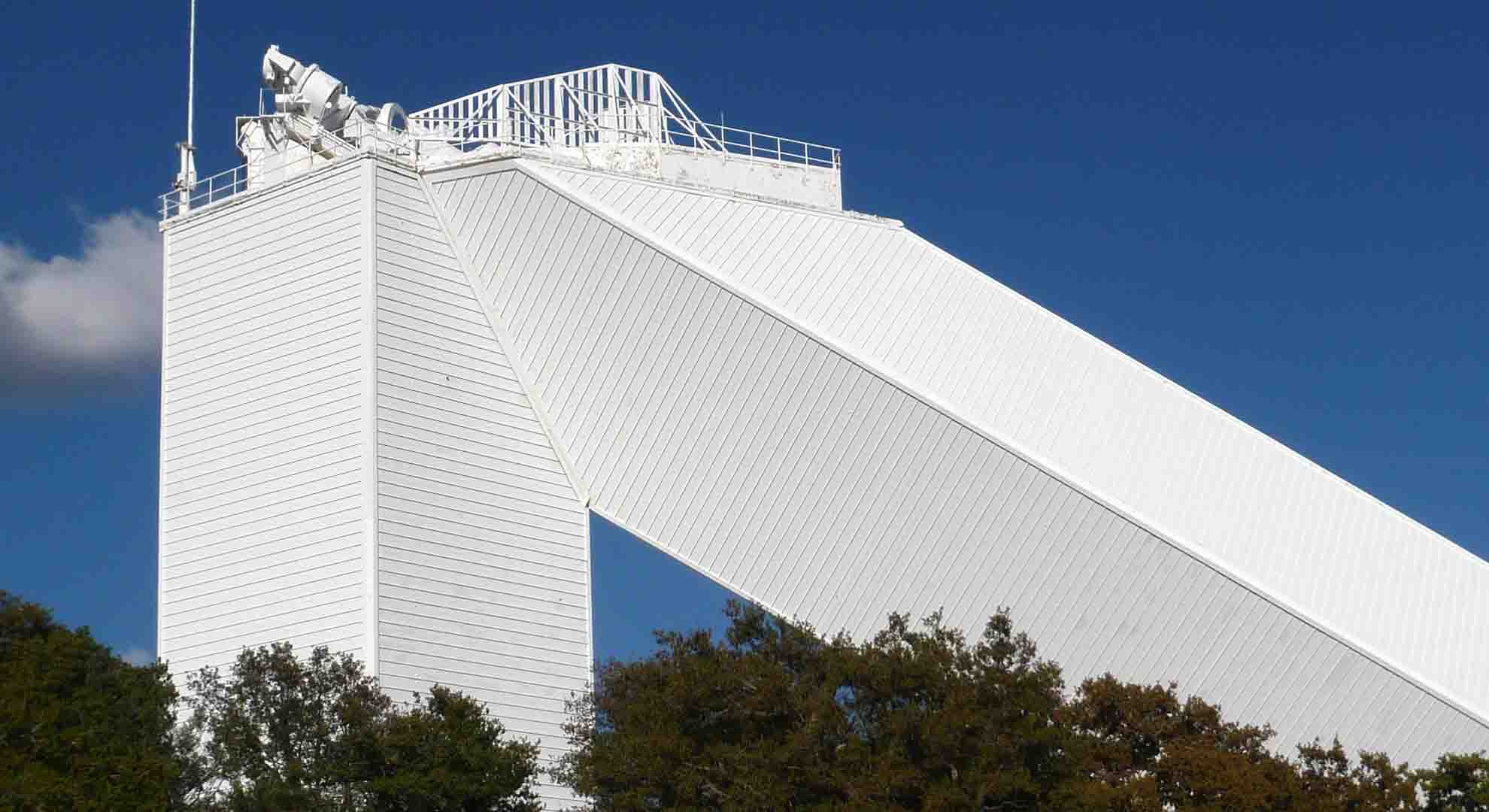
McMath-Pierce Solar Telescope
More modern telescopes have eschewed the dome shape altogether. The groundbreaking design of the McMath-Pierce Solar Telescope by Myron Goldsmith of Skidmore, Owings & Merrill LLP (SOM) completed in 1962, was described by president John F. Kennedy as “a source of pride to the nation.” Located at Kitt Peak National Observatory in Arizona, it was the world’s largest solar telescope at the time. The structure is comprised of a nearly 100 ft tower from which a shaft slants 200 ft to the ground. As SOM describes, the shaft continues into the mountain, forming an underground tunnel where the sun is viewed at the prime focus. The structure of this astronomical observatory was engineered to shelter the telescope from mountaintop winds, utilizing a square form tilted at a 45-degree angle. Both the tower and the light tunnel stand freely inside water-cooled protective concrete casings. Along with advancing the understanding of the sun, the much-photographed telescope has become an example of outdoor monumental sculpture.
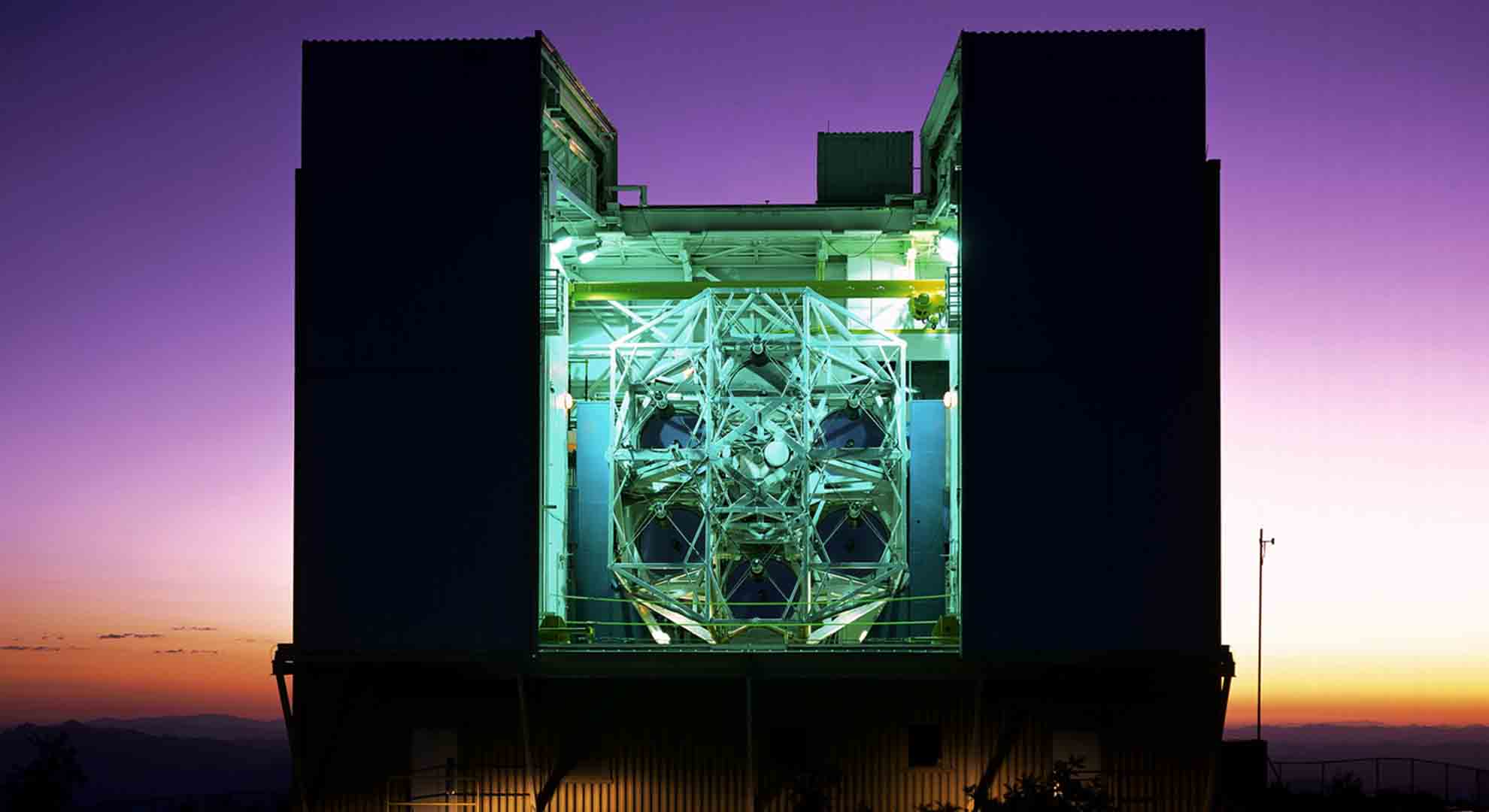
MMT Observatory
The MMT (Multiple Mirror Telescope) Observatory in Arizona, built in 1979, was only the third largest telescope at the time of its construction, but it was the first to place six mirrors in honeycomb formation and the first to be computer-monitored. In this particular design, the telescope and the building around it rotate in unison.
Client and famous astronomer Fred L. Whipple, after substantial consideration over the exact location of the building site, explained the architectural details of the astronomical observatory during a symposium held in May in 1979: “I was delighted with Carleton’s [one of the architects-engineers together with Aden B. Meinel] proposal for a revolving building to maintain a constant juxtaposition between the alt-altitude telescope and the auxiliary equipment such as sensors, records, controls, power and laboratories.” The MMT is housed inside a building in which the walls and roof around the telescope can be completely rolled back, allowing it to quickly cool and improve observation. Architect Meinel began his lecture at the same event with the words: “Astronomers continually desire telescopes of larger and larger light grasp to reach ever fainter objects.” He went on to describe the telescope’s three main innovations: the alignment of six mirror trains to produce a single star image; the reduction of the overall weight (especially of the mirrors to reduce building costs); and the use of advanced technology systems to obtain alt-azimuth drive precision and making it the first computer-controlled telescope.
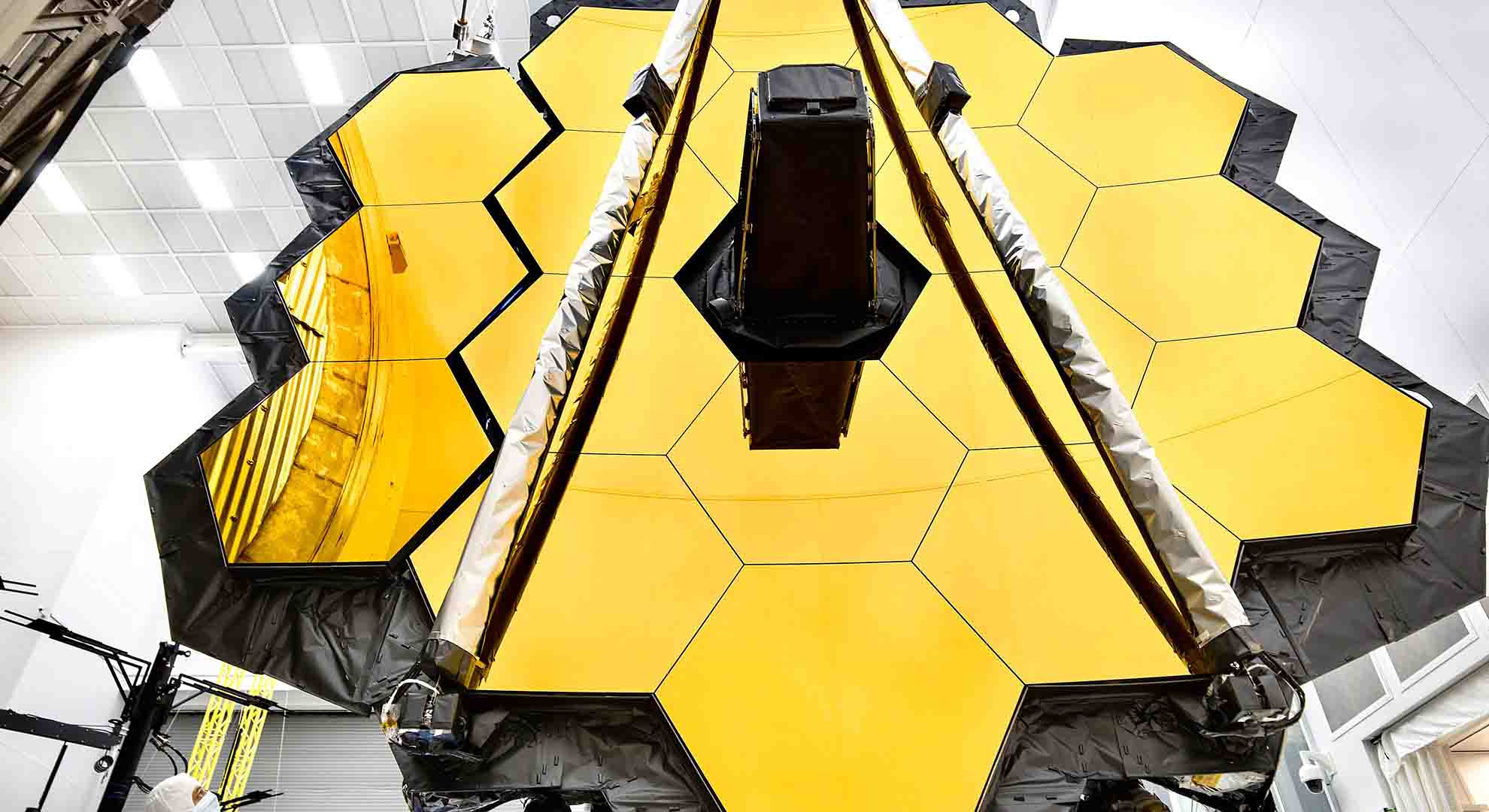
James Webb Space Telescope
In contrast with its ground-based counterparts, space telescopes are capable of capturing a clearer view of the Universe. As the successor of the Hubble Space Telescope, the James Webb Space Telescope (JWST) represents the next generation of telescope design, pushing the boundaries of technology in astronomical observation. Set to be launched on an Ariane 5 rocket from French Guiana in 2021, the JWST is a large infra-red telescope with a 6.5-meter primary mirror that will provide greatly improved resolution and sensitivity – an engineering feat in which NASA, ESA and the Canadian Space Agency (CSA) work closely together in a team of over 1,200 scientists. “Webb will be the premier observatory of the next decade, serving thousands of astronomers worldwide. It will study every phase in the history of our Universe, ranging from the first luminous glows after the Big Bang, to the formation of solar systems capable of supporting life on planets like Earth, to the evolution of our own Solar System”, says NASA.
The next stage of telescope and astronomical observatory design will take us even farther out into space in our search for answers about how the Universe began. As technology continues to advance, we have yet to see how architecture will shape these new star-gazing structures.
MAIN IMAGE: The McMath-Pierce Solar Telescope, captured both at sunrise and at noon by creative use of a double exposure. Photo: National Optical Astronomy Observatory
